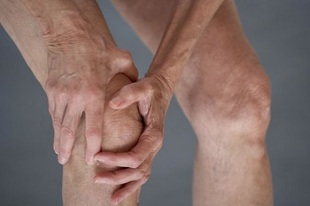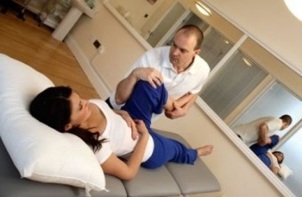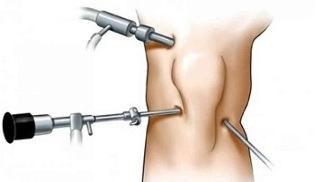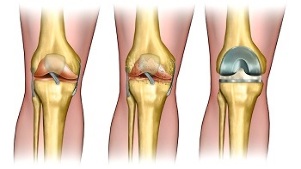2 ° gonerethrosis of the knee joint can not only decrease a patient's motor activity, but may also impair his or her quality of life in general. This may not only result in pain and inability to exercise, Until recently, it seemed insignificant.
Comparing the changes that occur between the initial stage of the disease and its second stage, one begins to understand: without proper treatment, the condition will only get worse.
due to illness
Often, the cause of the disease infection in Stage 2 is an irresponsible attitude to treatment and noncompliance with doctor's recommendations about physical activity and lifestyle changes.
In a joint already affected by the disease, blood circulation and metabolic processes are slowed to such an extent that tissues are unable to obtain nutrients and oxygen without outside help. When denied treatmentOr postpone it "for later", there is an acceleration of destructive processes in the joint and, as a result, their mild-phase disease changes into a more severe form.
symptoms
Stage 2 of gonarthrosis of the knee is characterized by the following manifestations:
- Increased pain: Pain attacks achieve a certain regularity (after night sleep, prolonged rest periods, physical exertion);
- Joint stiffness, usually in the morning, which disappears after a short walk;
- The knee joint increases in size, its relief is smooth - all physical bulges and depression on the joint are no longer defined. In the case of an erect, it "hangs" over the patella. May appear. In the squatting position, it becomes clear that one knee (affected by gonarthrosis) is much larger than the other, is healthier, and has a circular shape;
- When walking in the knee, a characteristic deficiency can be heard;
- Flexion and extension movements of the joint are increasingly limited.
People with grade 2 gonarthrosis are rarely able to do so without taking painkillers, as knee pain tends to be annoying even during rest periods. This is due to spike-like growths on the bone tissue of the joint, whichBurns and bruises all knee structures.
how does the doctor make this diagnosis
In most cases, a patient complaining of a worsening health condition has already been diagnosed with gonothrosis, and the attending physician may order an X-ray examination to assess changes in the joint.
If the doctor has reason to suspect that other diseases are associated with gonarthrosis, CT, MRI and laboratory blood tests, it may be recommended. It is necessary to exclude infections that are caused by bleeding. Can enter the joint, and has a complex course of gonarthrosis, with damage to soft tissues.
Disease Complications

In the absence of or inadequately responsible attitude towards treatment, grade 2 gonarthrosis can quickly pass the final "stage" and move to the final stage, in which pain becomes a constant companion, and joints. There are irreversible changes and distortions.
Furthermore, weak joint tissues are vulnerable to infection, and any viral or bacterial systemic disease can cause serious complications during gonarthrosis. The most common, but no less dangerous, is the formation of purulent material. Joint infection with the cavity, which can spread to soft tissues - muscles, skin.
treatment
In the treatment of grade 2 gonarthrosis, the focus is on relieving pain, slowing the joint or stopping the degenerative process in the joint as a whole, preventing complications, and improving knee mobility.
medicine
The medicines used in the treatment of 2 degree gonarthrosis are divided into the following groups:
- anti-inflammatory drugs.These include the latest generation of non-steroidal anti-inflammatory drugs (NSAIDs), which terminate the inflammatory process in the joint and, as a result, reduce pain.
- chondroprotectors.This group of drugs helps protect cartilaginous tissue from further destruction and enhances regeneration processes in them.
- Hyaluronic acid preparations,which are analogs of natural lubrication of the inner surface of the joint. By reducing friction in the collapsing joint, these drugs prevent further wear and tear on the cartilage. In some cases. In, intra-articular injection of hyaluronic acid is indicated (eg, very poor blood circulation in the joint, which prevents other forms of the drug from reaching the affected tissues).
- AIDS.These include vitamin preparations, immunostimulants, bioactive extracts from plants (Aloe, Echinacea, and so on), which are designed to improve blood circulation in the articular tissues and thus the metabolic processes in them. Let's accelerate.
physiotherapy, massage, exercise therapy

Such methods of treatment as physiotherapy, massage and exercise therapy can be considered helpful in the treatment of 2 degrees of gonarthrosis of the knee and are rarely used as independent methods of treatment.
Physiotherapy (UHF, phenophoresis, ultrasound therapy, magnetotherapy) is used to improve blood circulation in the joint and to stimulate recovery processes in it.
One of the most effective physiotherapeutic procedures for the treatment of arthrosis is MLS laser therapy with the ability to regulate laser radiation power. Therapy uses continuous and vibratory wavelengths, causing deep penetration into tissues and a clearThe clinical effect is achieved. The MLS laser treats all diseases of the joints, osteochondrosis, hernia and other diseases of the musculoskeletal system.
Massage is recommended in courses of 10–15 sessions, one session daily or every other day. The massage improves blood supply to the joint, normalizes metabolic processes in it and on the tissues affected by the disease. Provides more effective effect of drugs.
In the diagnosis of arthrosis of knee joints of 2 degrees, massage is often prescribed with the use of drugs (chondroprotectors, anti-inflammatory or irritating ointments, cold and anesthetic external agents). The choice of a specific drug remains with the doctor - the appointment depends on the clinical picture of the disease, severe symptoms.
After evaluating the effectiveness of drug treatment the complex of physiotherapy practice is assigned to the attending physicians, and is chosen keeping in mind the course of the disease and the individual characteristics of the patient's general health.
lifestyle improvement
Lifestyle improvement is one of the most important conditions for effective treatment. With second-degree gonerethrosis, you must follow the following rules:
- Reducing the load on the diseased joint.For this, orthopedic cans are used, which allow you to distribute the load during movement in such a way that the knee joint is minimally involved. It is important to choose the right cane for your height. - It should be from the wrist to the floor as you stand.
- diet.For this disease, reduce consumption of animal foods (eggs, meat, fish, whole milk), carbohydrates (baked goods, sweets) and any foods and beverages that contain synthetic flavors, sweeteners, preservativesIs recommended.
- Losing weight.Obesity is one of the risk factors that increase the likelihood of metabolic disorders in all tissues, including the tissues of the joints. In addition, being overweight is an unnecessary stress on the joints.
Surgical treatment
Surgical treatment can be divided into two types: arthroscopy and endoprosthetics.
Each operation has its own list of signals, for which intervention would be most effective.
arthroscopy

Arthroscopy is a low-traumatic surgical method in which the operation is performed using small light, surgical and video instruments inserted into the joint cavity through small pores.
reading:
- Presence of bone rasauli (osteophytes) that disrupt joint mobility;
- deformity of joint tissues, which can be cured without large-scale surgical intervention;
- The need for chondroplasty, which can significantly slow the progression of the disease and restore mobility of the joint.
Contraindications for arthroscopy are acute infectious disease, blood clotting disorder and a short range of motion in the joint - the inability to fully extend or flex the joint does not allow the surgeon to make the necessary manipulations.
Endoprosthetics
Endoprosthetics - the replacement of an artificial one knee joint made of durable and hypoallergenic material, which is similar in structure to natural bone tissue.
Over time, the prosthesis handles all the functions of the "native" joint and allows you to return to normal life.
reading:
- no effect after a long course of conservative treatment;
- acute disease progression;
- Changes in the joint significantly inhibit the patient's motor activity, creating a risk of severe and persistent pain and / or disability.

Among the absolute contraindications are only any systemic diseases that make any surgical manipulation impossible.
The attending physician weighs the risks and benefits of surgical treatment, and, based on the findings made, makes a decision about the need for surgery or to continue the conservative course of treatment.

















































